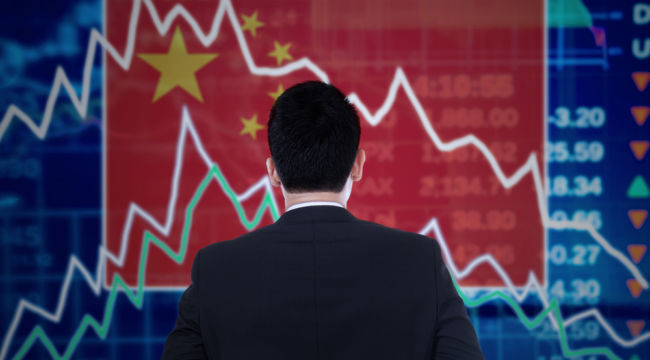“Mandate of Heaven” in Jeopardy
The U.S. markets are closed today for Presidents Day. If you have the day off, I hope you’re enjoying your long weekend.
But one event is taking center stage in the world that affects not only basic survival for millions of people, but the health of the global economy overall.
Of course, I’m talking about the coronavirus outbreak currently playing out before our eyes in China.
China’s economy was slowing substantially before the outbreak of the highly contagious and deadly virus last fall. This slowing was the predictable result of excessive debt levels, Trump’s retaliation in the trade wars, and China’s encounter with what development economists call the “middle-income trap.”
Developing economies can grow at double-digit rates as they move from low-income (about $3,000 annual per capita income) to middle-income (about $10,000 annual per capita income).
The main requirements are limits on corruption, a large pool of available labor, and an attractive legal environment for foreign direct investment. Once investment is used for infrastructure and labor is mobilized, large-scale basic manufacturing can commence.
This powers growth and the accumulation of hard currency reserves from export earnings.
The difficulty begins when an economy tries to move from middle-income to high-income (about $18,000 annual per capita income). That move requires more than cheap labor and infrastructure investment. It requires applied technology to produce high-value added products.
Only Taiwan, South Korea and Singapore have made this transition, (excluding Japan after World War II, and oil-exporting nations).
This explains why China has been so focused on stealing U.S. intellectual property.
Trump has been closing that avenue. China cannot generate the needed technology through its own R&D. China is stuck in the middle-income trap and a slowdown in growth is the inevitable result.
The story gets worse for China.
As of Friday, the total reported number of people infected by the coronavirus was 64,435. And the death toll was up to 1,383, including three people outside of China.
Those figures are official statistics released by China and other countries around the world where the virus has spread.
However, there is substantial medical, anecdotal, and model-based evidence that the actual infection rate and death rate may be ten to twenty times higher than those official statistics.
Over 60 million Chinese in several major cities are under “lock-down” where individuals are confined to their homes and may only leave once every three days to buy groceries.
Streets are empty, stores are closed, trains and planes are not moving, and factories are shut. The Chinese economy is slowly grinding to a halt.
This not only affects China’s economy as a whole, but the contagion filters down into individual companies that are dependent on China both for supply chain inputs and final sales.
And it will have a rippling effect on the U.S. economy also. This story has a long way to run.
Regards,
Jim Rickards
for The Daily Reckoning



Comments: